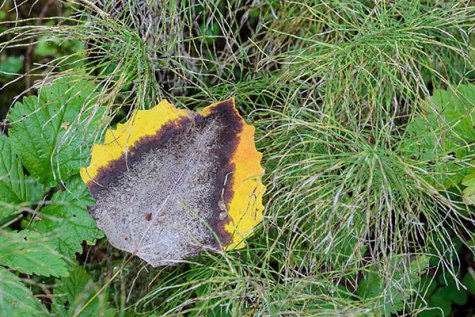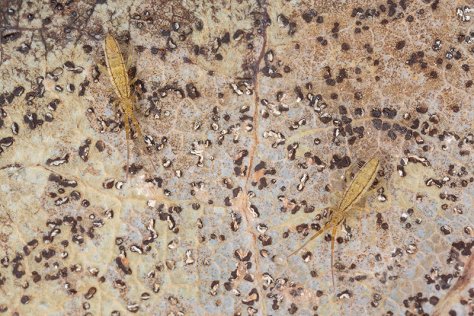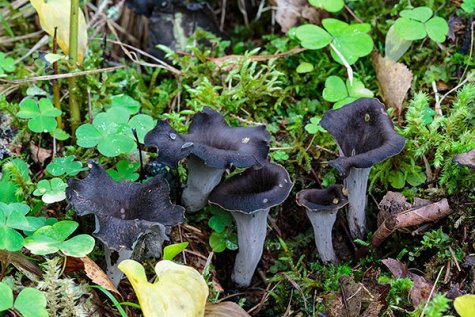Rõuge mushroom week third photo story
Photos and survey Urmas Tartes
Translation: Liis
05.09.2012
The yellow aspen leaf has turned brown in the middle as a result of the work of fungi
In close view we find tiny springtails (Collembola) on the brown leaf surface. The body length of the insects is 2 mm. They eat the mushroom mycelium or hyphae.
The fungi are not only beautiful eye-catching caps in the forest. A great number of fungi are such that reveal their presence only if you pay attention to small details. Fallen tree leaves are one such spot where there is little sense in looking for classic mushroom caps. On close inspection the bright yellow aspen leaf becomes a forest restaurant where fungi and tiny insects – springtails – together fill their bellies. At first fungi „eat“ the cellulose in the leaf. The springtails enter the leaf to eat the mushroom mycelium. Fungi and tiny insects acting together turn the brightly coloured leaf-fall of autumn into soil.
Black trumpet or Horn of plenty – highly valued edible mushroom
Today’s forest excursion brought an interesting surprise. It turned out that the black trumpet or horn of plenty (Craterellus cornucopioides) growing in moss is not a black tar horn but a much appreciated mushroom for eating. As ever, nothing should be judged from first appearances.
As of today 150 species of fungi have arrived to the exhibition from the Rõuge forests.
The mushroom excursions take place from Monday until Thursday, beginning at 10:00 in front of the Rõuge Peoples Centre. The mushroom exhibition will open on Tuesday night at 18:00 in the same place. A detailed schedule is on the Viitina Nature Education Centre home page











